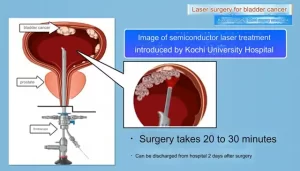Hepatitis B: infects cell targets with down-regulation of e antigen protein
Hepatitis B: infects cell targets with down-regulation of e antigen protein
Hepatitis B: infects cell targets with down-regulation of e antigen protein. Hepatitis B infects different cell targets, down-regulation of e antigen protein, natural TLR signal pathway.
Recent scientific research has proved that the e antigen (HBeAg) protein down-regulates the TLR innate immune signaling pathway, so some scientists have also pointed out that different cellular natural immune targets for HBV infection. How to understand the relationship between hepatitis B e antigen, HBV core protein (HBcAG), hepatitis B virus splicing protein (HBSP) and the TLR immune system?

Hepatitis B infects different cell targets, down-regulation of e antigen protein, natural TLR signal pathway
For example, on March 5, 2020, researchers from the Research Center for Infectious Diseases and Molecular Pathology of Guangdong University and the Nucleic Acid Research Department of the Institute of Genetic Engineering and Biotechnology, Alexandria, Egypt, put forward relevant opinions. And published in the scientific journal “Viruses”. The researchers’ point of view is that when compared with patients with hepatitis B e antigen-negative chronic hepatitis B, the expression of TLRs in Kupffer cells, peripheral monocytes and hepatocytes of e antigen-positive chronic hepatitis B patients is reduced (view from: Viruses).
How to understand the point made by scientists?
In fact, in this report, the HBV cDNA plasmid encoding the stop codon mutation in the pre-core region of G1896A (which can eliminate the production of e antigen) has no effect on the expression of TLR2. However, a recent global study showed that e antigen directly interacts with a key adaptor in the TLR2 pathway. When compared with the e-antigen-negative HepG2 cell line, the expression of IFN-α and IFN-β mRNA was down-regulated in the stably transformed e-antigen-positive HepG2 cells.
Thus, scientific data proves the previous view that e antigen protein down-regulates the TLR innate immune signaling pathway. There are also some observations, such as the discovery of the direction of HBV core protein (HBcAG) and HBV splicing protein (HBSP). What is the role of HBV core protein? It actually acts as a trans silencer by combining with the IFN-β promoter to interfere with the expression of IFN-β in mouse fibroblasts (in animal experiments). The researchers noticed that the HBV core protein encoded by spliced pgRNA down-regulates the expression of MxA protein induced by IFN. MxA is an important antiviral protein kinase (view from this researcher).
Hepatitis B virus X protein (HBx)
In addition to these findings, in addition to core protein and pre-core protein, the most frequently detected spliced pgRNA also encodes a new protein called HBSP, which may down-regulate MxA. It can be seen that HBcAg and HBSP down-regulate the expression of MxA protein induced by IFN. Previous studies have shown that HBx promotes MAVS ubiquitination through Lys136 to trigger its proteasome-mediated degradation. Compared with wild-type MAV, MAVS K136R induces a higher level of IFN-β activation, which indicates that MAVS Lys136 may be It is the ubiquitination site targeted by ubiquitin E3 ligase RNF125;
The MAVS protein can be degraded by the proteasome through RNF125-mediated ubiquitin binding. PSMA7 is a subunit of the proteasome, which is responsible for regulating the activity of HBx-related complexes, suggesting that HBx may interact with PSMA7 to regulate the function of protease. PSMA7 may regulate the host’s innate immune signal by destroying the stability of MAV. Scientists believe that if PSMA7 can be increased, it may bridge HBx on the outer mitochondrial membrane to exert its inhibitory effect on the innate immune response.
If the above observations are more obscure, then scientists formally propose that HBV polymerase inhibits innate immunity
Before revealing, scientists gave 3 observations in the scientific journal Viruses on March 5. The purpose of the 3 observations was to discuss the effect of hepatitis B virus Pol on IFN signals. First, and previous studies have shown that HBV-Pol has an inhibitory effect on IRF signal, and has less inhibitory effect on NF-kB signal, which all contribute to the production of IFN-β; second, in a non-immune state, large HBV-Pol was detected locally, which indicates that HBV-Pol may be involved in the onset of hepatitis B virus or immune escape;
The third observation is that Pol of hepatitis B virus has been confirmed as a viral protein that confers resistance to interferon therapy. Global studies have shown that HBV polymerase is an effective inhibitor of inducing hepatocyte IFN-β, and its expression can inhibit the promoter activity, transcription and antiviral immunity of the PH5CH8 primary hepatocyte line IFN-β. In addition, some studies have shown that HBV polymerase interferes with the induction of IFN-β at the level of TBK1/IKKε, and the expression of HBV polymerase inhibits the endogenous IRF3 phosphorylation induced by Sendai virus (parainfluenza B virus, SeV). Dimerization and nuclear translocation.
How to understand the conflict between HBV and innate immunity introduced above?
Simply put, as introduced earlier, the hepatitis B virus is also called a “stealth virus” by scientists, and it does not interfere with the inherent immune induction function of liver cells. However, in the latest research, it has been found that circulating innate immune cells and hepatocyte populations can sense and respond to HBV infection. Therefore, scientists believe that this will enable the innate immune system to detect and limit invading viruses. In addition, when HBV is compared with other viruses, the hepatocyte interferon response induced by HBV is relatively weak. This research conclusion is consistent with the results of mice and chimpanzee models.
(source:internet)
Disclaimer of medicaltrend.org



